In January, wee Susie White was left at home with Gran and Granda and the rest of the family – Iain, Gail, Cameron and Kirsty – travelled to the Canadian Rockies to ski at Banff Alberta. It was a 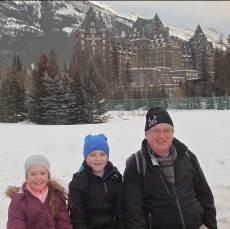 wonderful experience, skiing in perfect conditions and on blemish free powdery snow over 7,000 feet above sea level. Banff, now with a population of over 8,000, was first settled in the 1880s, after the transcontinental railway was built through the Bow Valley. In 1883, three Canadian Pacific Railway workers stumbled upon a series of natural hot springs on the side of Sulphur Mountain. In 1885, Canada began promoting the area as an international resort and spa as a way to support the new railway. The area was named Banff in 1884 by George Stephen, president of the Canadian Pacific Railway, recalling his birthplace in Banff, Scotland. The Canadian Pacific built a series of grand hotels along the railway line and advertised the as an international tourist resort.
wonderful experience, skiing in perfect conditions and on blemish free powdery snow over 7,000 feet above sea level. Banff, now with a population of over 8,000, was first settled in the 1880s, after the transcontinental railway was built through the Bow Valley. In 1883, three Canadian Pacific Railway workers stumbled upon a series of natural hot springs on the side of Sulphur Mountain. In 1885, Canada began promoting the area as an international resort and spa as a way to support the new railway. The area was named Banff in 1884 by George Stephen, president of the Canadian Pacific Railway, recalling his birthplace in Banff, Scotland. The Canadian Pacific built a series of grand hotels along the railway line and advertised the as an international tourist resort.
In between taking chairlifts up the mountains and then whizzing down beautifully groomed ski trails between huge pine, fir and spruce trees we did find a little bit of time to explore in town of Banff. I looked across the road on Caribou Street and saw a large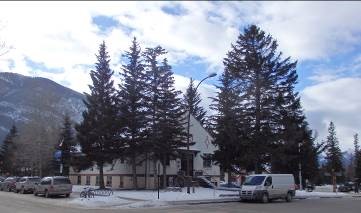 square and compasses sitting in a snowy garden. It was the temple of the Cascade Lodge No 5, named after the great mountain that towers over the main street in the town and dominates the skyline of the surrounding area.
square and compasses sitting in a snowy garden. It was the temple of the Cascade Lodge No 5, named after the great mountain that towers over the main street in the town and dominates the skyline of the surrounding area.
The Lodge was instituted in 1888, and has been meeting since then. Originally located in Anthracite (a small mining town between Banff and Canmore) the Lodge was known as Cascade Lodge No 42 of the Grand Registry of Manitoba (Alberta not yet a province). The Lodge moved to Banff from 1892 until 1897 when it returned to Anthracite. In the early days of the Lodge, meetings were often held in different locations amongst the surrounding mountains. One such meeting was held in 1901 at Tunnel Mountain.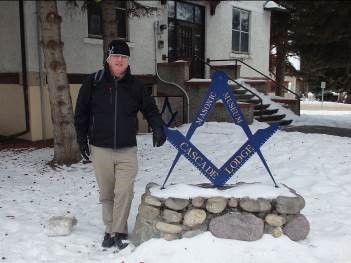 From 1901 to 1905, the population of Anthracite all but disappeared and in 1905 the Lodge relocated to Banff. On October 12, 1905, the last meeting of Cascade Lodge No 42 was held and on November 23, 1905, the first meeting of Cascade Lodge No 5 of the Grand Lodge of Alberta was held.
From 1901 to 1905, the population of Anthracite all but disappeared and in 1905 the Lodge relocated to Banff. On October 12, 1905, the last meeting of Cascade Lodge No 42 was held and on November 23, 1905, the first meeting of Cascade Lodge No 5 of the Grand Lodge of Alberta was held.
The present Lodge was constructed in 1924 and was first used in February 1925. It was designed by architect James A. MacDonald of Calgary and built by Arthur Unwin of Banff. It has been in use as a Masonic Lodge for over 90 years.
Many of Banff's most notable citizens have served as the Worshipful Master of the Lodge since it was chartered in 1888 (Grand Lodge of Manitoba 1888 - 1905; Grand Lodge of Alberta 1905 – present). Affiliated organizations associated with the Lodge have been the Order of the Eastern Star, Royal Arch Masons and the Banff Shrine Club. The Lodge was the center of social activity in the town for many years being that most of the hotels would close for the winter season and it was one of the largest buildings in town.
The Lodge meets on the second Thursday of each month, except July and August.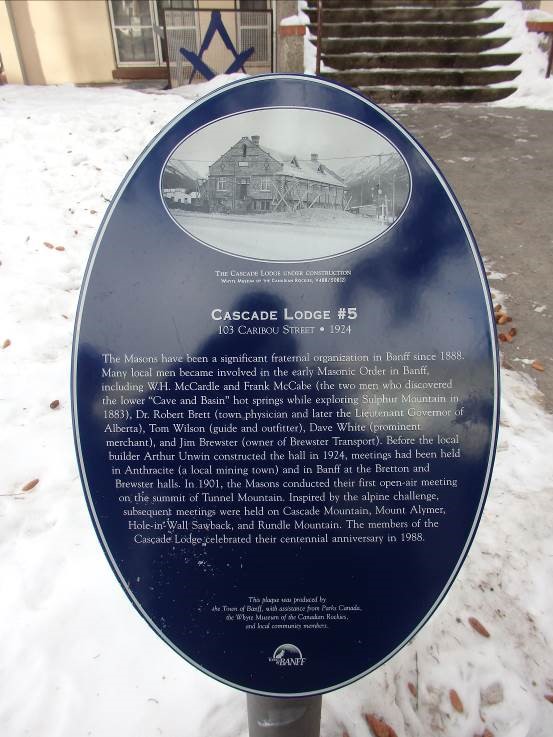
I was very unlucky because the Lodge meeting was the evening when we flew into Calgary and the Annual Installation was 2 days after we left for home. However, I was able to go into the Lodge because it operates as a Museum and the following are views of the upper room, looking East and below looking West.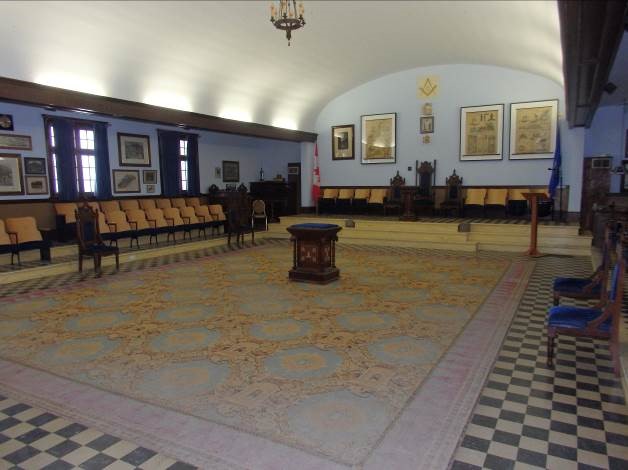
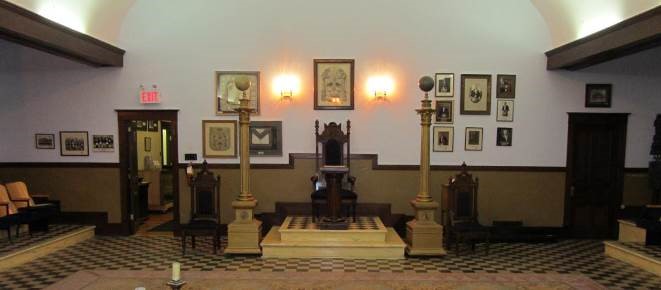
In conversation with the volunteer Curator, a retired electrical engineer, I learned that the Lodge had donated the building to another local charitable organisation. I discovered the following, 0n-line when I did a wee bit of research.
Cascade Lodge No. 5, known locally as the Masonic Hall, is one of Banff’s many heritage resources and come April 1 it will be under new ownership.
Banff Masons are donating the lodge and the lease for the triangular piece of property it sits on bounded by Lynx, Bear and Caribou Streets, to the Peter and Catharine Whyte Foundation, effective Tuesday (April 1).
Brett Oland, the foundation’s executive director, said adding the lodge to its inventory of heritage properties will free the Banff Masons to focus on what they do best, which is community support, and at the same time it provides the foundation with a hall that has strong historical value that can be used for the foundation’s growing event-based business.
Along with taking ownership of the Masonic Hall, the Peter and Catharine Whyte Foundation is also planning to sell one of its heritage residential properties, Mary Schäffer’s home, Tarry-A-While.
The donation of the lodge and the sale of Tarry-A-While will allow the foundation to better meet its core mandate, which is operating the Whyte Museum, Oland said in a recent interview with the Outlook.
“With the recent acquisition of the culturally significant Cascade Lodge No. 5, the Whyte Museum continues its stewardship of the historical fabric of the Bow Valley. Not only will the Lodge now have a secure and enduring future, it will also give the Whyte a dedicated space in which to conduct expanded programs, meetings and special events to showcase its impressive collection of artifacts and fine art,” Oland wrote in a follow-up email.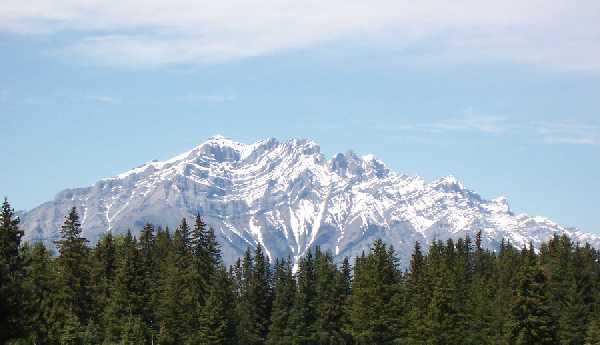
Freemasonry in Banff, Alberta or What you find on a Skiing Holiday
- Latest News
-
COMMENTS
- Hits: 3586
